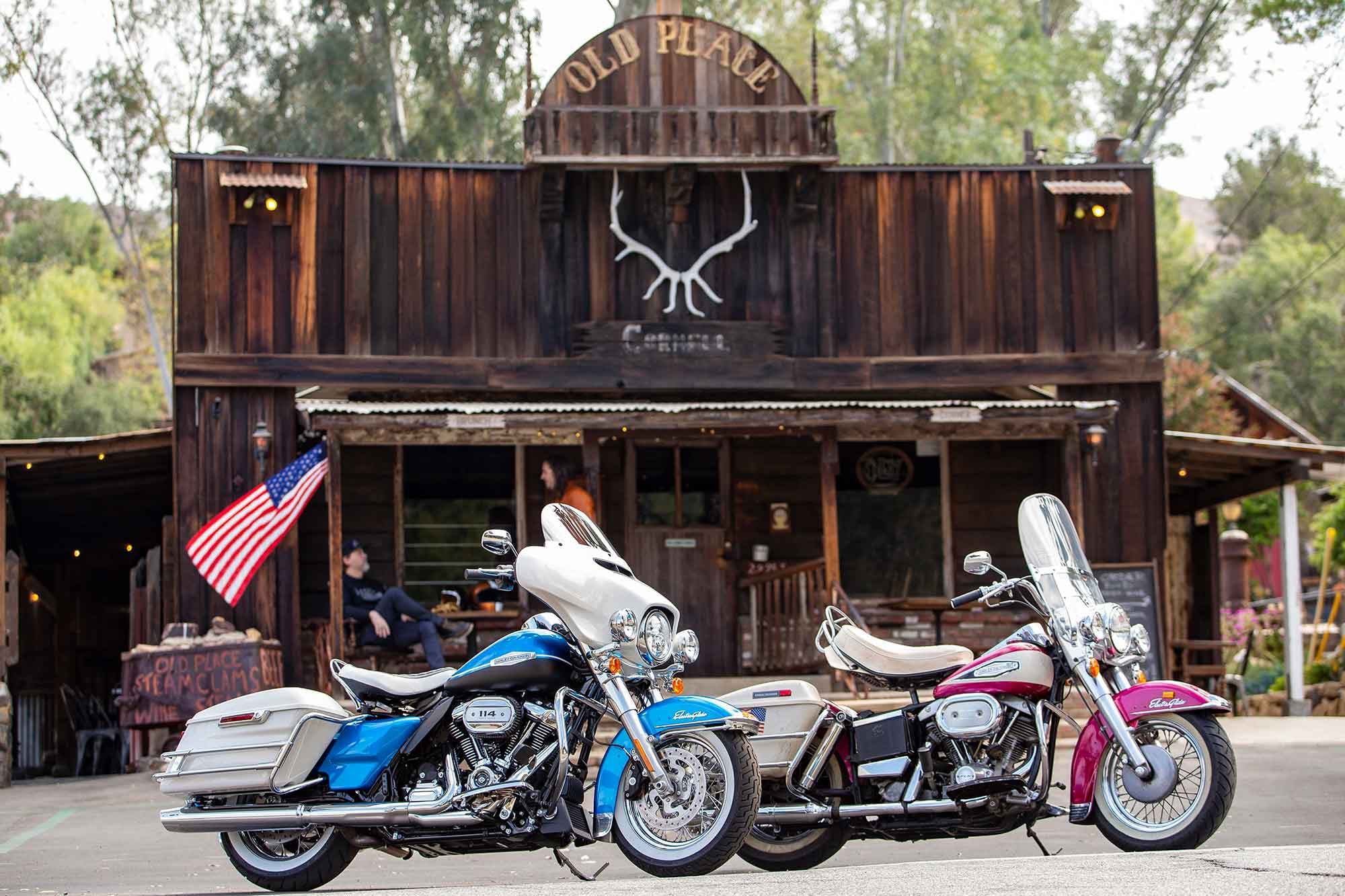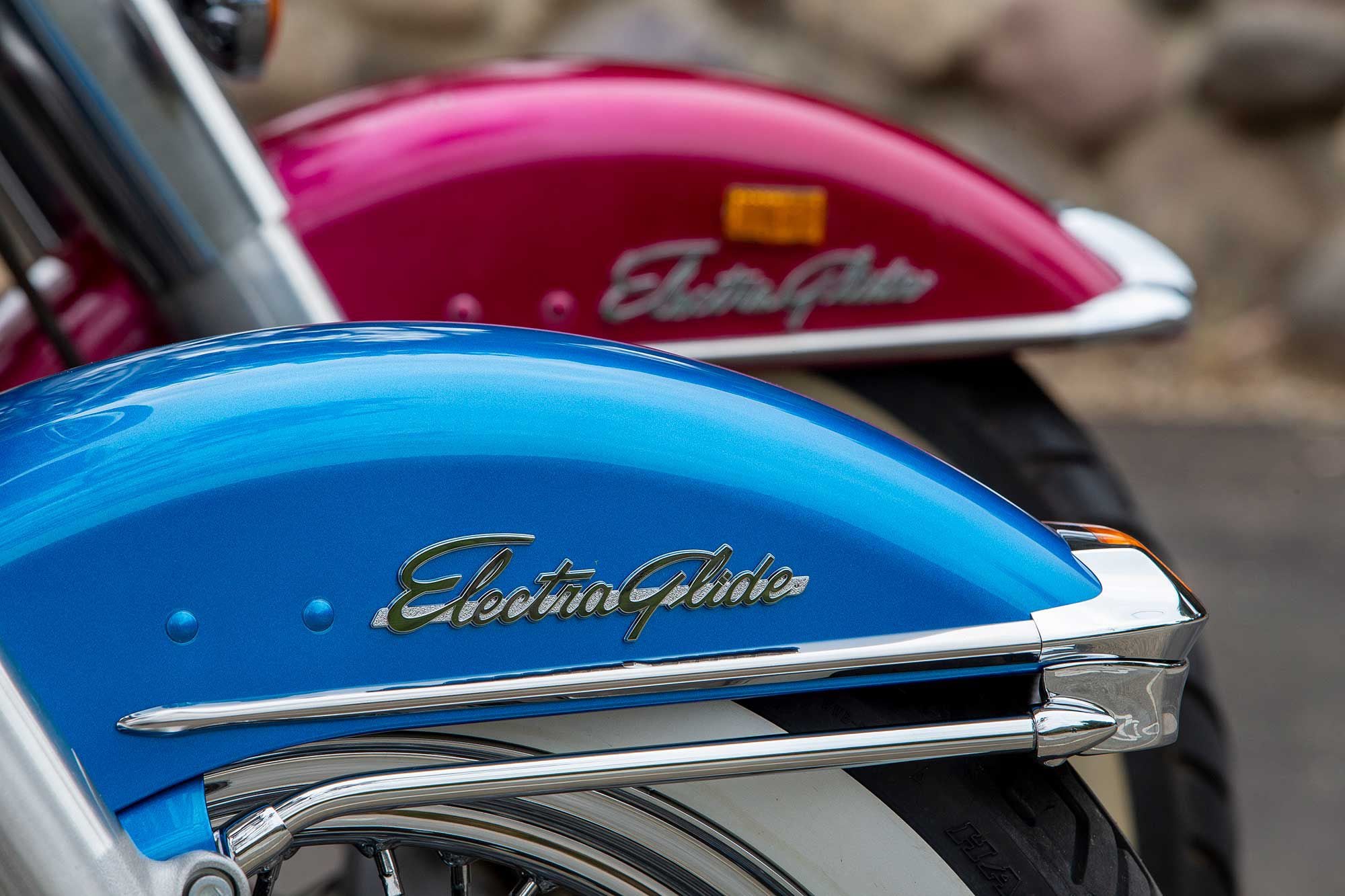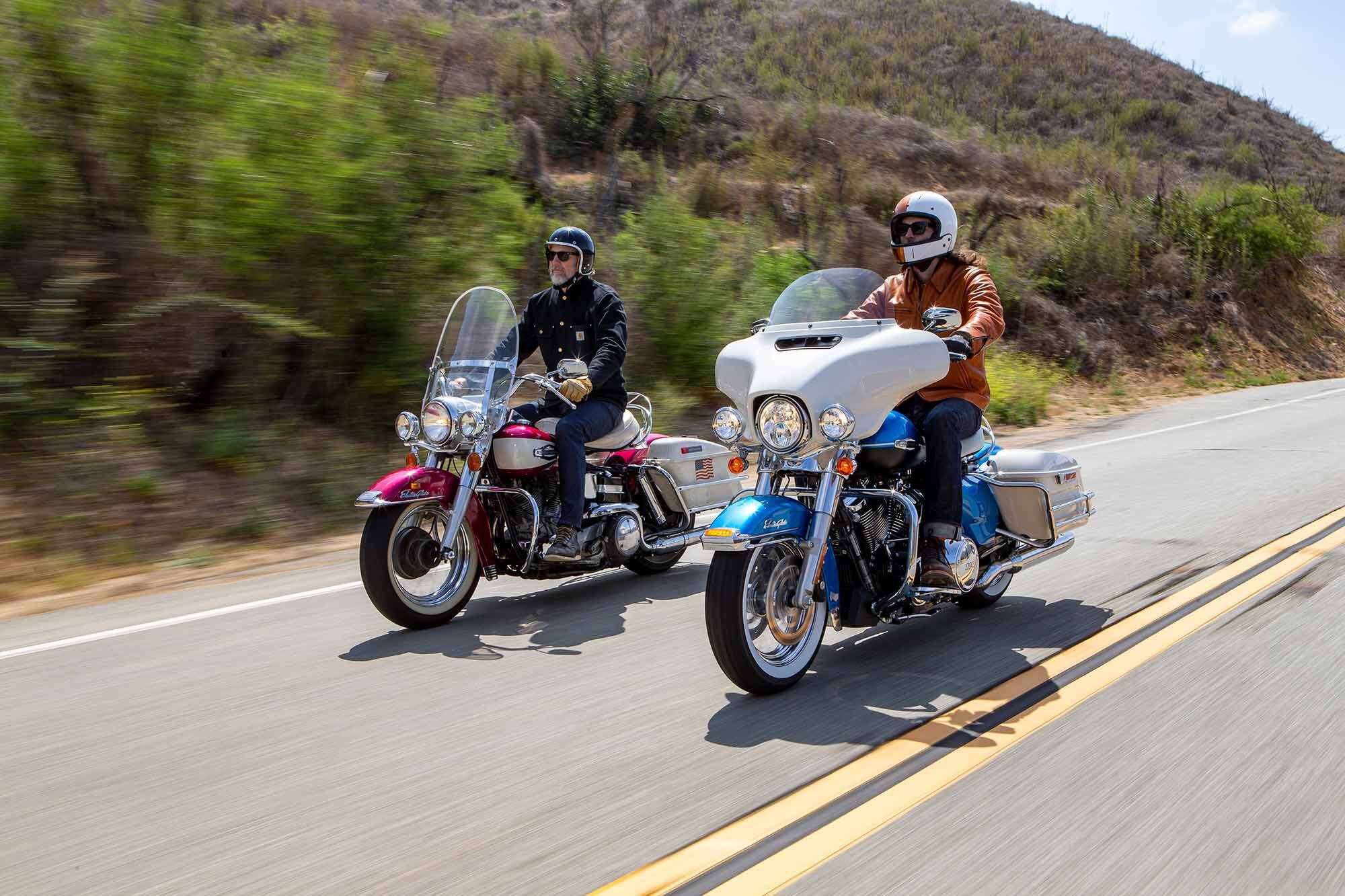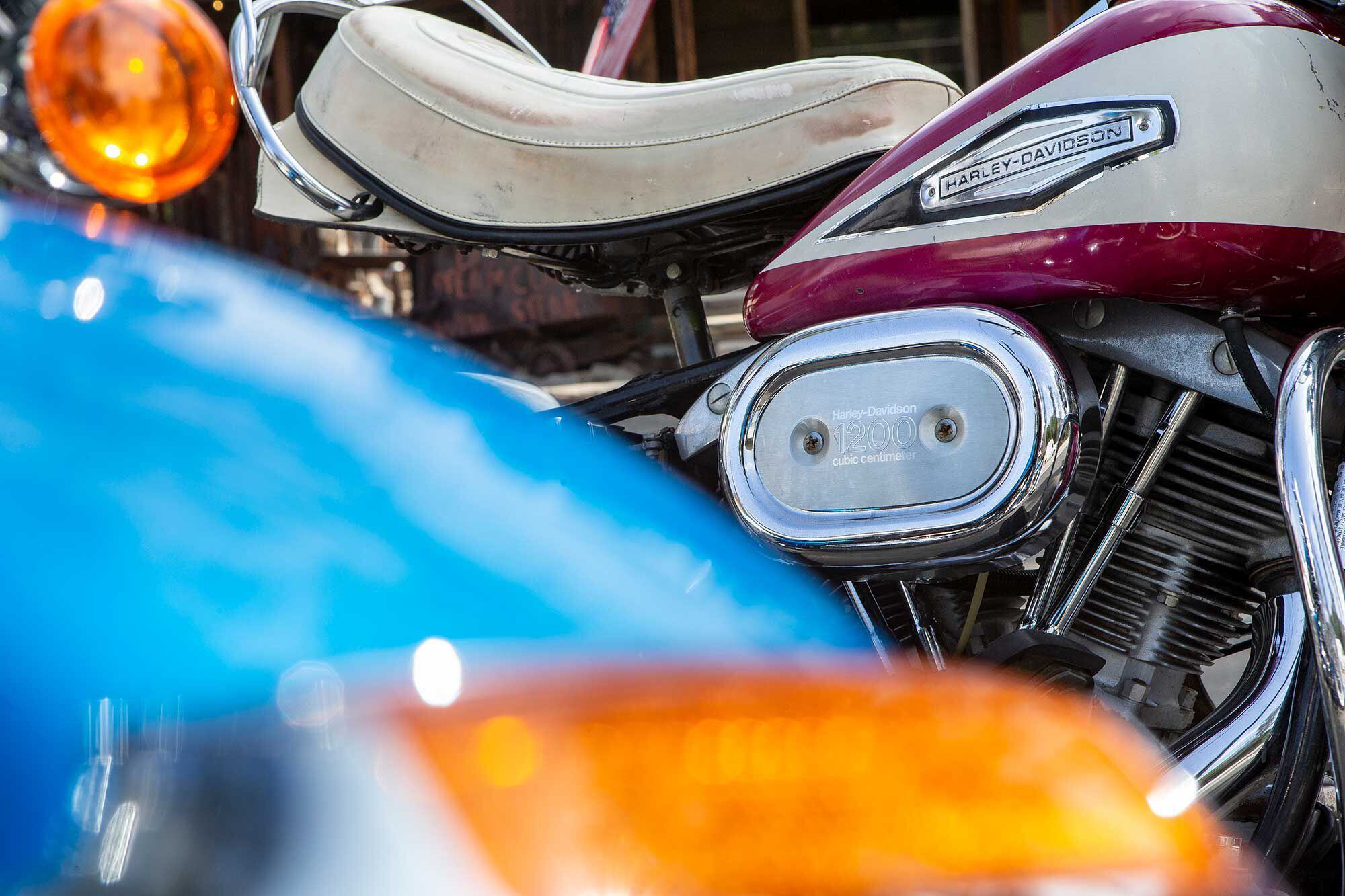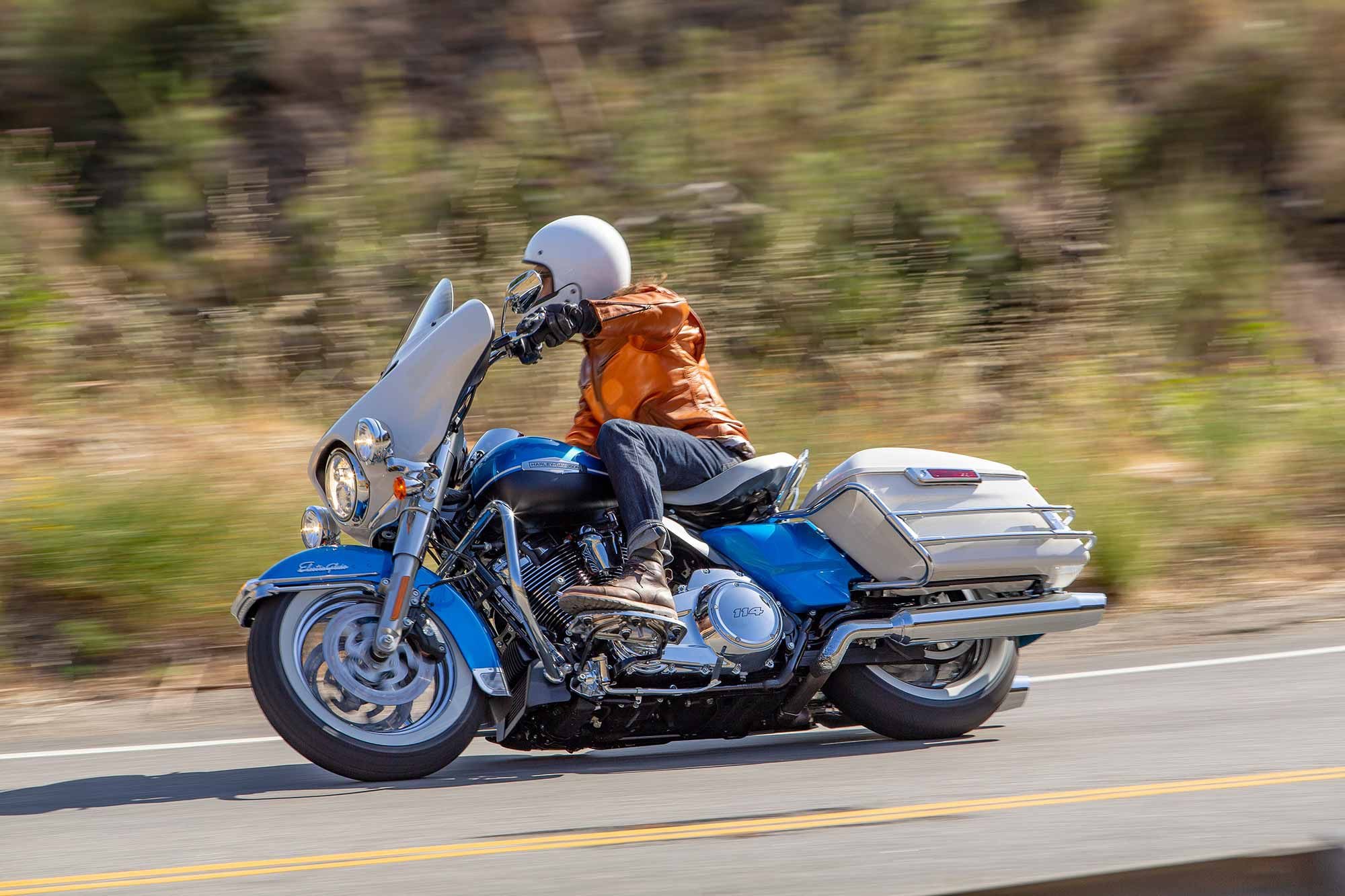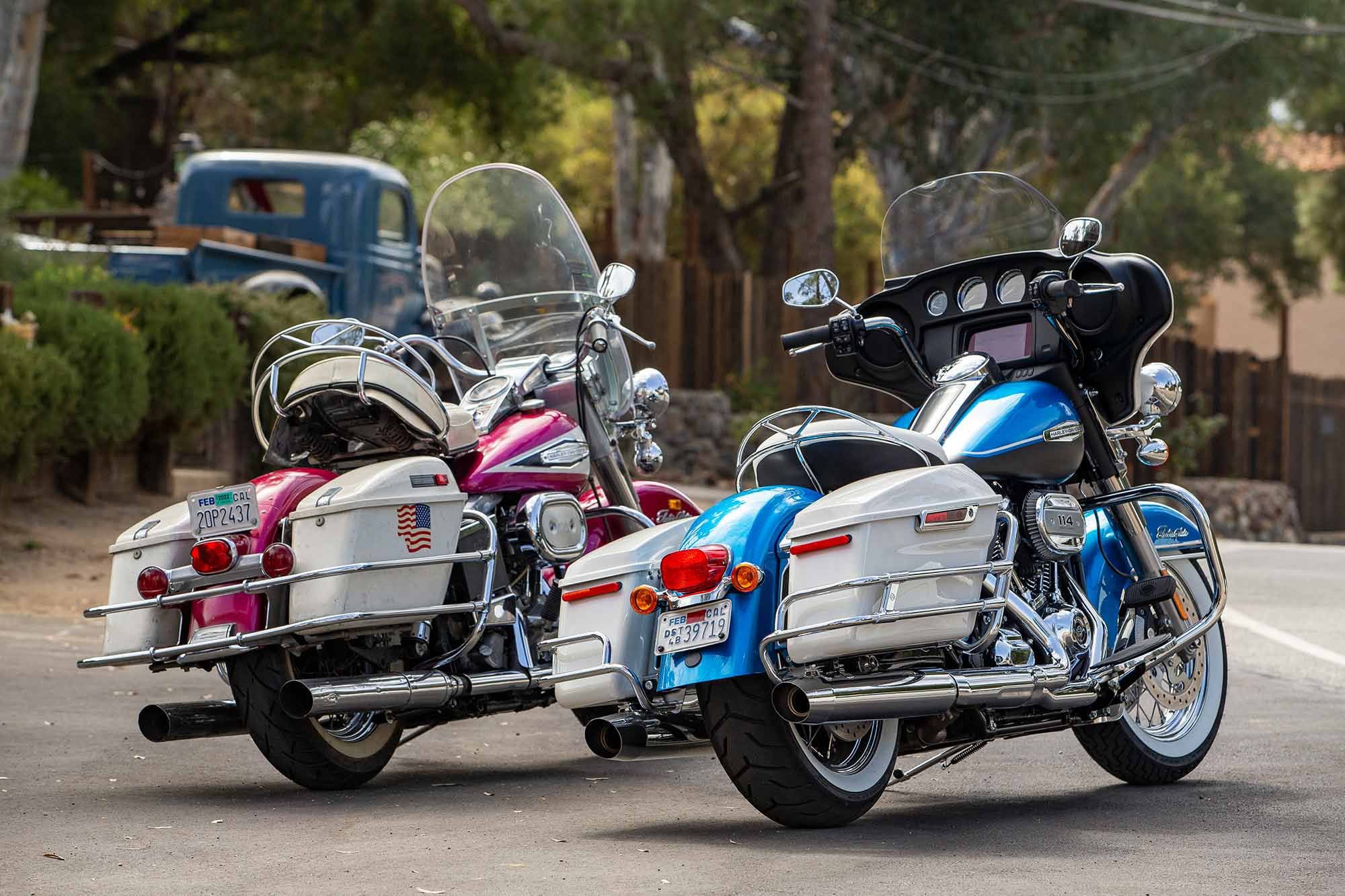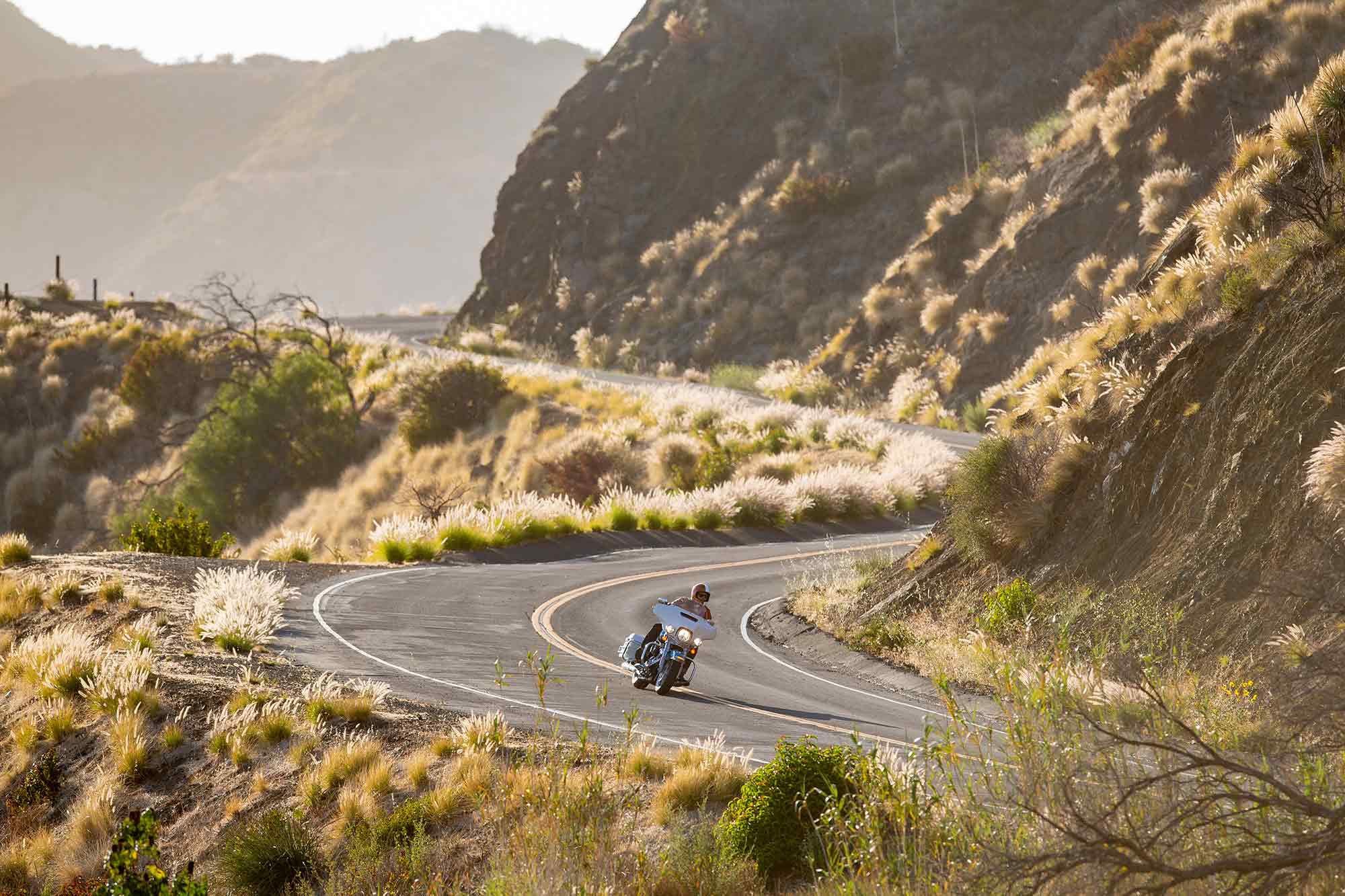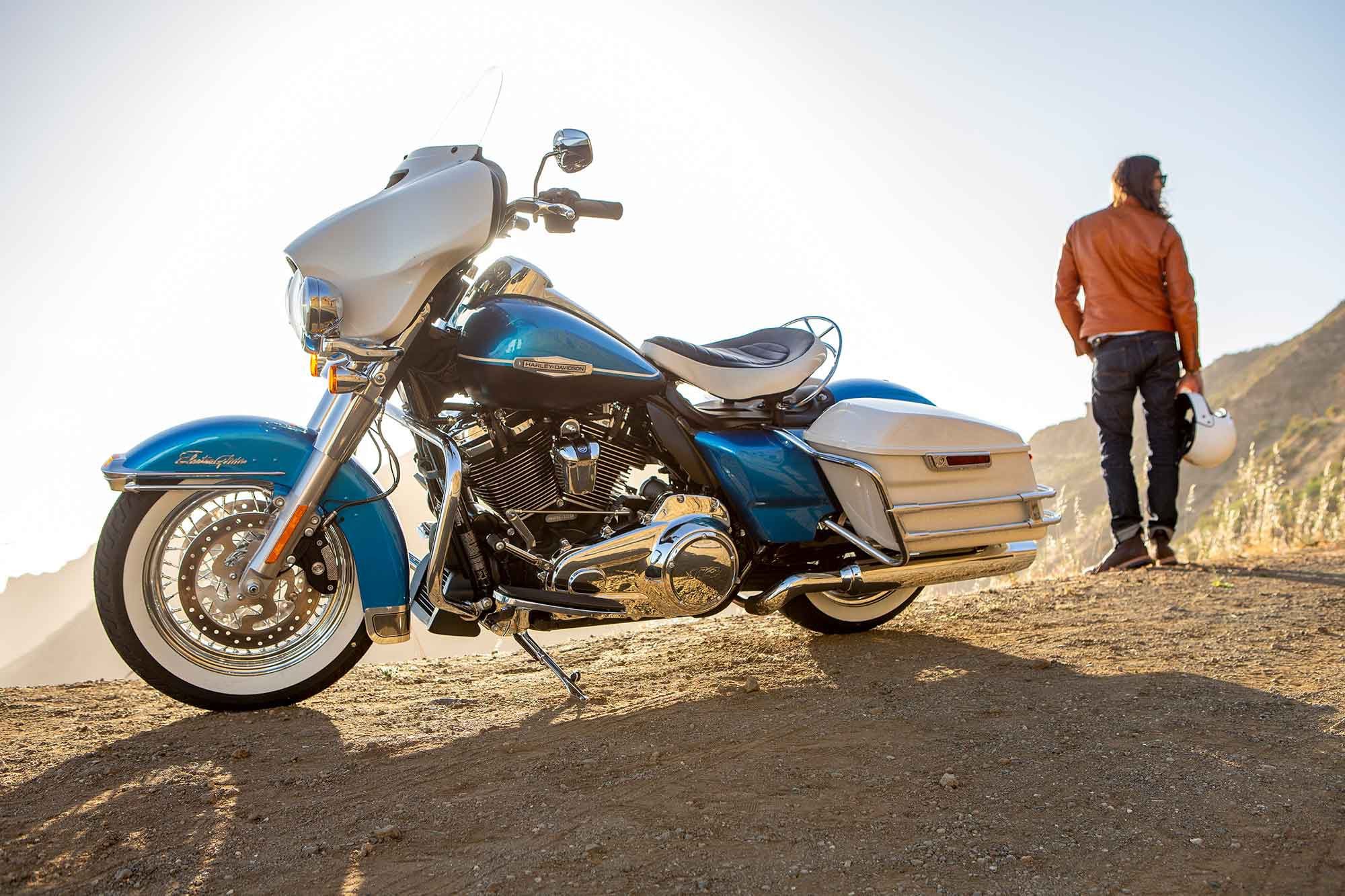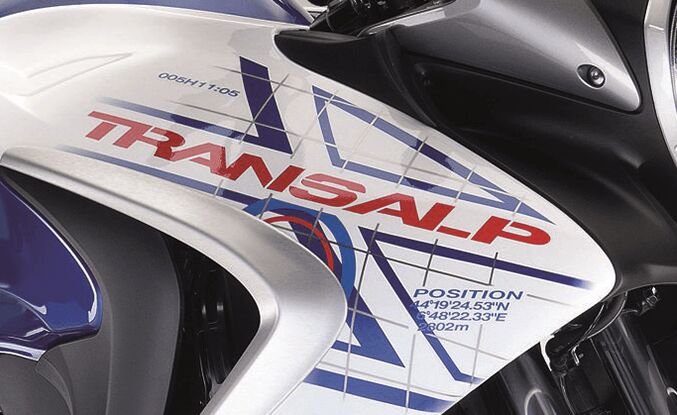The 2021 Harley-Davidson Electra Glide Revival next to its inspiration, an original 1970 Harley-Davidson FLH Electra Glide. (Jeff Allen/)
When, in 2018, Harley-Davidson first announced its More Roads strategy, with its focus on “building riders” in part by breaking into new markets like small-displacement and electric motorcycles, then-CEO Matt Levatich said, “Harley-Davidson is iconic because we’ve never been static.”
While the company’s steady motion has been important, it’s an icon because Harley-Davidson is an anchor of consistency in a changing world. Having produced motorcycles for almost 120 years, The Motor Company’s steadfast adherence to the same design principles year after year have made it a mainstay of American culture.
Now, with the More Roads plan all but scrapped, Harley-Davidson’s new Hardwire agenda shifts the company’s primary focus back to its core products, such as heavyweight cruisers and touring motorcycles.
The first action in line with this new plan is the launch of the Icons Collection, a limited-production line of motorcycles celebrating both iconic past designs and future icons. The man behind this new collection and the 2021 Electra Glide Revival, its first bike, is Brad Richards, H-D’s vice president of Design.
“We realized that if we created some kind of family of bikes that had very limited numbers, serialized, that we could do more of these superniche design ideas, like this bike here that was sitting in front of me on the design table,” Richards motioned to the Revival as we sat outside of the Old Place, a historic, rustic restaurant in the canyons north of Los Angeles.
The classic Electra Glide insignia adorns the Revival’s front fairing and the FLH behind it. (Jeff Allen/)
The collection was established with specific ground rules. First, each bike would only be produced one time, serialized, and limited to 1,500 motorcycles worldwide. Second, they had to be priced within a reasonable range of other models, not excessively marked up because of the limited run. And finally, each bike had to celebrate a specific important moment in Harley-Davidson’s history.
Morgan and Brad Richards ride side to side on two Electra Glides with five decades between them, along Mulholland Drive. (Jeff Allen/)
The new Electra Glide Revival is an homage to the 1969 FLH Electra Glide. The original FLH signaled the shift from early touring, with leather saddlebags and a windshield strapped and bolted on by owners, to what The Motor Company calls “Grand American Touring,” as ’69 was the first year the batwing fairing and hard bags became available. These were only offered as an accessory and not color-matched, which is why we see them in this Birch White today. Still, it was the first appearance of a silhouette that’s lasted more than 50 years and is still present in Harley-Davidson baggers.
The original FLH had a hydraulic pogo seat, mimicked in the new model with a shock underneath the solo saddle. (Jeff Allen/)
The Revival’s chassis is a modern Street Glide’s set on chrome spoked wheels with whitewall tires, equipped with a Milwaukee-Eight 114 engine, and given chrome rails around the saddlebags, front fender, and sprung solo seat. Parked next to the 1970 Electra Glide, they’re just about the same size. The proportions match, and though the 2021 model has speakers and an infotainment screen, it’s not much more cluttered than the classic model, which gets by with only a windscreen. Technology has been integrated without interrupting the bike’s form.
“Over the years, the design team and the engineering team have really been very surgical with the evolution of the form factor,” Richards says. “We can replicate many of these early designs because the parts are kind of the same. Visually, you can make the connections very easily, so this opens up all kinds of opportunities for us to do some cool stuff in the future.”
Classic style and modern performance–the Electra Glide Revival is an easy machine to appreciate. (Jeff Allen/)
As for what exactly this future is, it’s not surprising that Richards can’t say. He did offer: “I can tell you that it’s going to be as dramatic as this motorcycle, but it’s going to speak to a different generation.”
The Icons program is giving designers avenues to express and explore more niche ideas without having to meet the demands of mass production or mass appeal. Celebrated machines like the XR-750 racebike or the Sportster XLCR Cafe Racer could be reimagined in wholly new ways. Or what if out-of-production models such as the FXR and Dyna have potential to reappear as a limited FX Super Glide Revival or FXRS Sport Glide? It’s focusing on Harley-Davidson’s core in a new and exciting way. It’s a clear representation of Harley-Davidson’s timeless message and a return to the brand identity that we know and love after a time of uneasy change.
Next to each other, it’s easy to see how Harley-Davidson was able to maintain similar proportions from one machine to the other. (Jeff Allen/)
“If we play the same riff over and over, it’s a failed exercise,” Richard says. “We have to move around and keep it fresh and keep people wondering what’s coming next. I don’t think there’s any era that’s off limits.”
Electra Glide Revival models are limited to only 1,500 serialized units—never to be reproduced. (Jeff Allen/)
The Electra Glide Revival is only available in Hi-Fi Blue/ Birch White and has a starting MSRP of $29,199–if you can find one. (Jeff Allen/)


